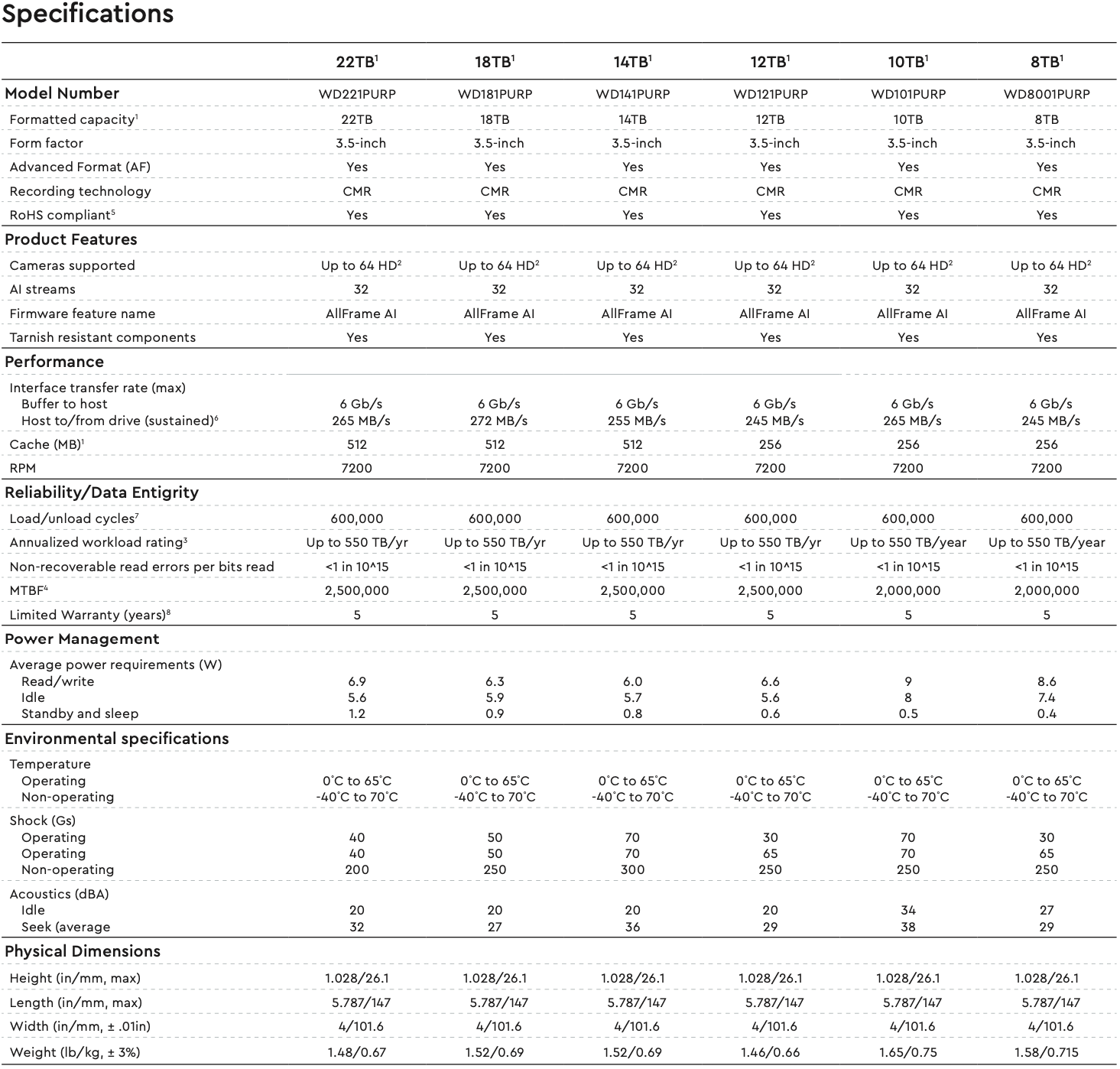Western Digital Ships 22TB HDDs for Mass Market
When Western Digital introduced its 22TB hard drives earlier this year, the company only offered them in its Ultrastar lineup. This drive family is designed primarily for server makers and is not widely available in the channel or retail. However, this week Western Digital began to ship 22TB WD Gold, WD Red Pro, and WD Purple Pro HDDs that will be available to a considerably wider audience.
Western Digital's 22TB HDDs share the same 10-platter 3.5-inch helium-filled platform that relies on energy-assisted perpendicular magnetic recording (ePMR) technology and triple-stage actuators (TSA) to deal with a very high track density. The drives are enhanced with OptiNAND technology to improve real-world performance by moving repeatable runout (RRO) metadata from magnetic media to NAND flash memory and improving reliability. The hard drives feature a 7,200-RPM spindle speed and a 512MB cache.
Since Western Digital's 22TB WD Gold HDDs feature the highest areal density to date, it isn't surprising that they also offer a maximum sustained transfer rate of 291 MB/s, the highest we've ever seen on a hard drive. As for power consumption, these drives consume 5.7W (in line with lower-capacity drives) in idle mode and 9.3W in operational mode (significantly higher than lower-capacity drives). Meanwhile, the 22TB WD Red Pro and WD Purple Pro are rated for a 265 MB/s sustained transfer rate and 6.8W/3.4W and 6.9W/5.6W operational/idle power consumption, respectively.



Since all Western Digital's 22TB hard drives are designed for multi-drive environments, they feature enterprise-grade features to boost their reliability and ensure predictable performance, including a top and bottom attached motor, RV sensors, and other means to reduce turbulence. But although various 22TB HDDs from Western Digital have a lot in common, they are aimed at different applications and therefore have some differences on the hardware level and completely different firmware optimizations.
Western Digital traditionally positions its WD Gold for servers and workstations, so the full focus of these drives is on their reliability and predictable performance. By contrast, the company's WD Red Pro is designed for enterprise-grade NAS with up to 24 bays and therefore is optimized for multi-user 24x7 environments and high-intensity workloads. Interestingly, WD Red Pro is the only 22TB HDD rated for a 300TB annual workload, as other members of the 22TB club are rated for a 550TB annual workload. Finally, Western Digital's WD Purple Pro HDDs are developed for video surveillance, smart video recorders, and similar applications, which is why they can handle up to 64 single-stream HD cameras and support AllFrame AI technology which supports 32 AI streams for deep-learning analytics.
Western Digital's WD Gold/WD Red Pro/WD Purple Pro 22TB hard drives are now available at an MSRP of $599. In addition, all the HDDs are covered with a five-year warranty and are rated for a mean time between failure (MTBF) of 2.5 million hours.
Get Tom's Hardware's best news and in-depth reviews, straight to your inbox.

Anton Shilov is a contributing writer at Tom’s Hardware. Over the past couple of decades, he has covered everything from CPUs and GPUs to supercomputers and from modern process technologies and latest fab tools to high-tech industry trends.